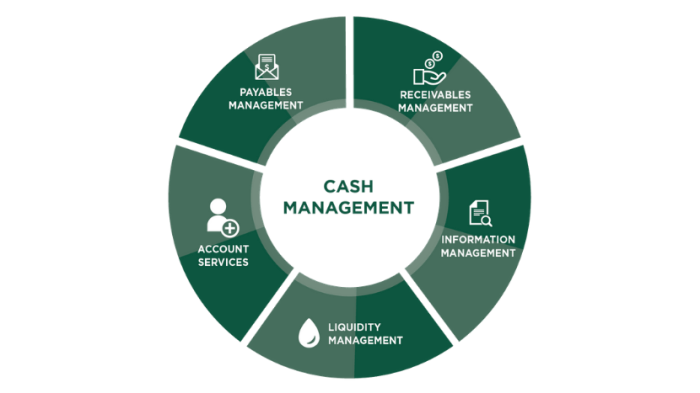Delving into the realm of Managing Cash Flow with a Business Line of Credit, this guide promises to provide valuable insights and practical tips for businesses looking to optimize their financial operations.
Exploring the intricacies of cash flow management and the strategic use of business lines of credit, this guide aims to equip readers with the knowledge needed to navigate the financial landscape successfully.
Importance of Managing Cash Flow

Effective cash flow management is essential for the financial health and sustainability of any business. It involves monitoring, analyzing, and optimizing the flow of money in and out of the company to ensure there is enough cash on hand to cover expenses, debts, and investments. Poor cash flow management can have severe consequences for a business.
It can lead to cash shortages, missed payments to suppliers or employees, increased borrowing costs, damaged credit ratings, and even bankruptcy. Without proper cash flow management, a business may struggle to operate efficiently and grow in a sustainable manner.
Impact of Poor Cash Flow Management
- Inability to meet financial obligations, resulting in late payments and penalties.
- Lack of funds for essential business operations, leading to decreased productivity and growth.
- Difficulty in securing financing or attracting investors due to unstable financial position.
- Risk of insolvency and closure of the business if cash flow issues persist.
Benefits of Effective Cash Flow Management
- Improved ability to plan for and manage future expenses and investments.
- Enhanced financial stability and credibility with suppliers, creditors, and investors.
- Opportunity to take advantage of discounts, negotiate better terms, and build strong relationships with stakeholders.
- Increased flexibility to adapt to changing market conditions and seize growth opportunities.
Understanding Business Lines of Credit
A business line of credit is a flexible form of financing that allows a business to borrow funds up to a predetermined limit. Unlike a traditional term loan, where the borrower receives a lump sum upfront and repays it over a fixed period, a business line of credit provides access to funds on an as-needed basis.
Advantages and Disadvantages of Using a Business Line of Credit
- Advantages:
- Flexibility: Businesses can borrow funds as needed, up to the approved limit, giving them access to cash when required.
- Cost-effective: Interest is only charged on the amount borrowed, not the entire credit limit, potentially saving money compared to other forms of financing.
- Revolving: Repaid funds become available for borrowing again, providing ongoing access to working capital.
- Disadvantages:
- Variable interest rates: Rates may fluctuate based on market conditions, leading to potential increases in borrowing costs.
- Risk of overborrowing: Easy access to funds can lead to excessive debt accumulation if not managed responsibly.
- Fees and restrictions: Some lenders may charge fees or impose restrictions on the use of funds, affecting the overall cost of the credit line.
Situations Where a Business Line of Credit is Suitable
- Seasonal businesses: Companies with fluctuating cash flows can use a line of credit to cover expenses during slow periods.
- Emergency expenses: A credit line can provide a quick source of funds to address unexpected costs or opportunities.
- Inventory management: Businesses can use a line of credit to purchase inventory or take advantage of bulk discounts.
How to Obtain a Business Line of Credit

When it comes to obtaining a business line of credit, there are specific steps you need to follow to increase your chances of approval and secure the funding your business needs.
Applying for a Business Line of Credit
- Research Lenders: Look for lenders who offer business lines of credit and compare their terms and requirements.
- Prepare Financial Documents: Gather all necessary financial documents, such as tax returns, bank statements, and financial statements.
- Submit Application: Fill out the application form accurately and provide all required information and documentation.
Requirements and Qualifications
- Good Credit Score: Most lenders require a good personal and business credit score to qualify for a business line of credit.
- Business Revenue: Lenders may look at your business's revenue and cash flow to determine your ability to repay the credit line.
- Business History: Some lenders may require a minimum number of years in business to qualify for a line of credit.
Tips for Approval
- Improve Credit Score: Work on improving your personal and business credit scores before applying for a line of credit.
- Show Strong Financials: Demonstrate a healthy cash flow and revenue stream to prove your business's ability to repay the credit line.
- Prepare a Solid Business Plan: Present a detailed business plan outlining how you will use the funds and how it will benefit your business.
Managing Cash Flow with a Business Line of Credit
Managing cash flow effectively is crucial for the financial health of any business. A business line of credit can be a valuable tool in achieving this goal by providing access to funds when needed.
Benefits of Using a Business Line of Credit for Cash Flow Management
- Flexibility: A business line of credit offers the flexibility to borrow funds as needed, helping to address cash flow gaps or unexpected expenses.
- Interest only on what is used: Unlike a traditional loan, you only pay interest on the amount you borrow from the line of credit, making it a cost-effective solution for managing cash flow.
- Quick access to funds: With a business line of credit in place, you can quickly access funds when needed, providing a safety net for your cash flow needs.
Best Practices for Using a Business Line of Credit
- Monitor cash flow regularly: Keep a close eye on your cash flow to identify potential gaps where a line of credit may be necessary.
- Use it for short-term needs: Utilize the line of credit for short-term cash flow needs rather than long-term financing to avoid accumulating unnecessary debt.
- Repay on time: Make timely repayments to maintain a positive relationship with the lender and ensure continued access to the line of credit.
Examples of Improved Cash Flow Management with a Business Line of Credit
For example, a seasonal business experiencing a slow period can use a line of credit to cover operational costs until business picks up again. Similarly, a business facing unexpected expenses can tap into their line of credit to bridge the gap without disrupting cash flow.
Risks and Challenges of Using a Business Line of Credit
When utilizing a business line of credit for cash flow management, there are certain risks and challenges that businesses need to be aware of to ensure financial stability and success.
Potential Risks of Using a Business Line of Credit
- Interest Rates: Fluctuating interest rates can significantly impact the cost of borrowing and may lead to higher repayment amounts.
- Overspending: Easy access to funds through a business line of credit can tempt businesses to overspend, leading to increased debt levels.
- Dependency: Relying too heavily on a line of credit for regular cash flow needs can make a business vulnerable in times of financial strain.
- Credit Score Impact: Failure to make timely repayments on a business line of credit can negatively affect the company's credit score.
How to Mitigate Risks when Using a Business Line of Credit
- Regular Monitoring: Keep track of borrowing and repayment patterns to avoid overspending and ensure timely repayments.
- Create a Repayment Plan: Develop a structured repayment plan to manage debt effectively and avoid accumulating unnecessary interest.
- Diversify Funding Sources: Consider alternative financing options to reduce reliance on a business line of credit for cash flow needs.
- Stay Informed: Keep abreast of market trends and interest rate changes to make informed borrowing decisions.
Common Challenges Businesses Face with Business Lines of Credit
- Approval Process: Meeting stringent eligibility criteria and documentation requirements can pose a challenge when applying for a business line of credit.
- Repayment Pressure: Balancing regular operational expenses with loan repayments can strain cash flow management for businesses.
- Credit Limitations: Limited credit lines may restrict the amount of funds available, affecting the business's ability to address larger financial needs.
- Unexpected Expenses: Sudden financial emergencies or unforeseen expenses can disrupt planned cash flow management, necessitating additional borrowing.
Conclusive Thoughts
In conclusion, Managing Cash Flow with a Business Line of Credit offers a dynamic approach to sustaining financial health and stability in the business world. By leveraging the benefits of a business line of credit effectively, businesses can enhance their cash flow management practices and secure a solid foundation for growth and success.
Q&A
What are the typical requirements for obtaining a business line of credit?
Requirements for a business line of credit usually include a good credit score, stable revenue streams, and a solid business plan.
How can a business line of credit help in managing cash flow?
A business line of credit provides businesses with a flexible source of funding to cover short-term cash flow gaps and operational expenses.
What are the risks of relying too heavily on a business line of credit?
Risks include accumulating high-interest debt, damaging credit scores, and potential cash flow instability if not managed properly.









